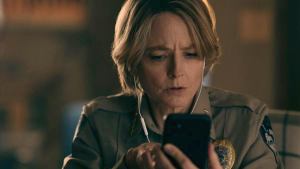Lovecraft Country‘s third episode, “Holy Ghost”, sees Leti Lewis (Jurnee Smollett) by up a big house in a most unfriendly white neighborhood in Uptown Chicago. However, harassment and bigotry aren’t Leti’s only problems: literal ghosts of racial injustice rear their heads in her new home, as Lovecraft Country does its riff on the haunted house formula. (Mild Spoilers Follow:) As Leti digs into the mystery of what evil is haunting her, a run-in with the local sheriff reveals that she has inherited the “Winthrop House,” where the horrific murders of black people took place. While that may be fiction, Lovecraft Country is actually referencing a very real place, with a unique racial history.
Videos by ComicBook.com
The 4600 block of North Winthrop, Chicago, has been memorialized as the North Side’s oldest black community. The first black residents in the neighborhood faced harsh realities of segregation and harassment from the surrounding white neighbors, as black people were, by and large, consigned to Chicago’s South Side neighborhoods. In fact, just gaining entry into the Winthrop block was a major hurdle for African-Americans, as noted in author Jacki Lydon’s “Legends and Landmarks of Uptown“:
“The Central Uptown Chicago Association spent $14,000 to get a city restriction which said that ‘No Negro person can buy, own, or rent property in this district except on that block which is inhabited entirely by Negros’… A black chauffeur, whose employer left him a home on the block in his will, was the first to live there. Rollins Lambert, the first black priest ordained by the Archdiocese of Chicago, also lived there for a while.
In order to obtain a legal injunction, the Central Uptown Chicago Association needed 90% of the neighborhood’s property owners to sign a petition. It took several years to collect the necessary number of signatures since many property owners lived outside the neighborhood.”

When the barrier was broken, the 4600 block of Winthrop became a beacon, as the only Uptown neighborhood that would rent to black people. With the surrounding environment being so hostile, the various families of Winthrop block became a tight-knight extended family, now referred to as the “Winthrop Avenue Family.”
Emmanuel Lewis was part of the Winthrop Avenue Family in the 1950s (when Lovecraft Country is set). As he previously told Chicago Talks:
“There must have been some kind of underground communication among black folks that said, ‘Hey, ya’ll, come on up to Winthrop. We continued to grow as a family and stick together. There was no violence. Everybody looked out for each other.”
A more recent resident of the area, Tonia Lorenz, framed the history of the Winthrop block like this:
“The Winthrop Avenue pioneers had to deal with something far uglier than a weedy lot. They had to deal with enforced legal segregation, but they didn’t let it stand in their way.”
As you can see, Lovecraft Country took the spirit of the black people who became the Winthrop Avenue pioneers and used it to form the backbone of its thematic metaphor. The show literally and figuratively brought back the ghosts of racial injustice when it comes to things like housing and segregation. Just one more overlooked lesson of history that HBO is bringing to the forefront.
Lovecraft Country airs Sundays on HBO and streams on HBO Max.




